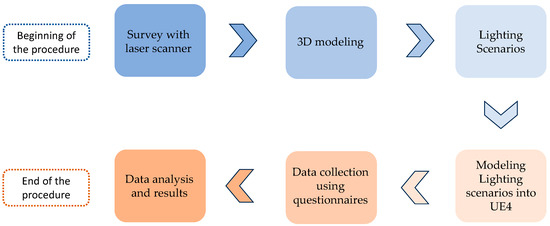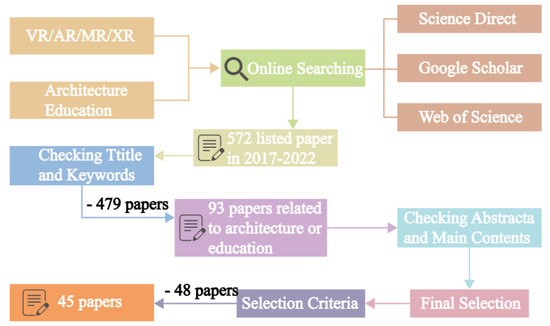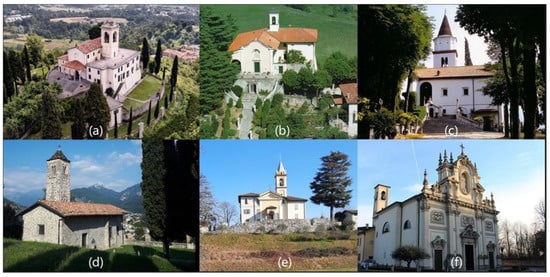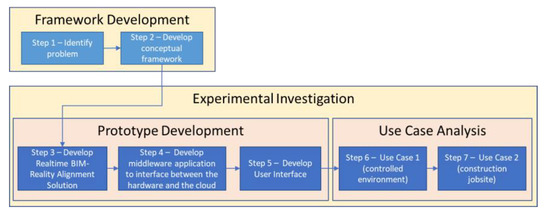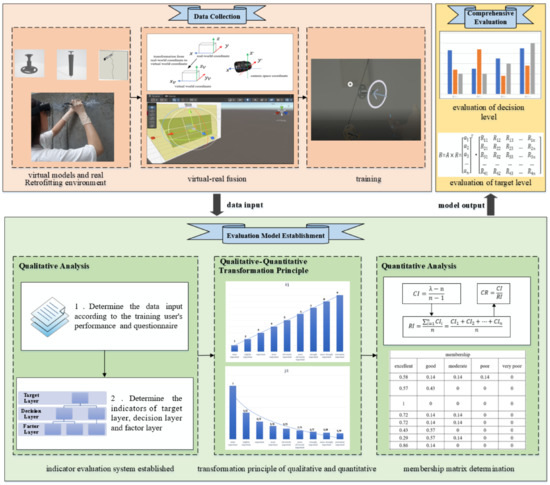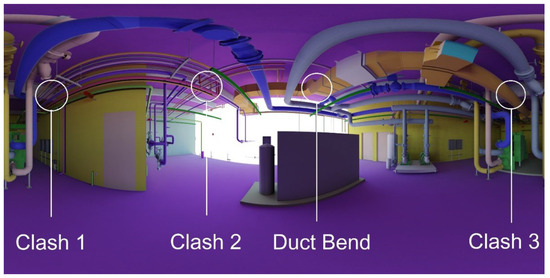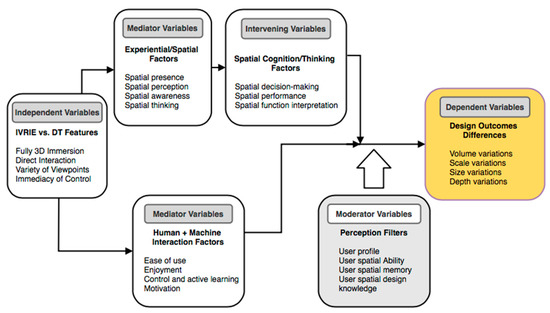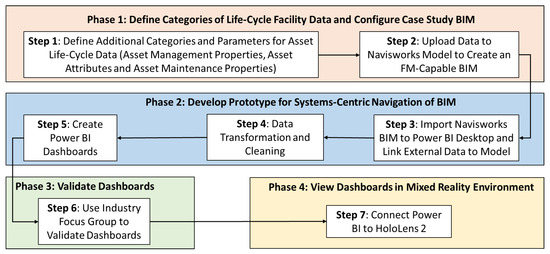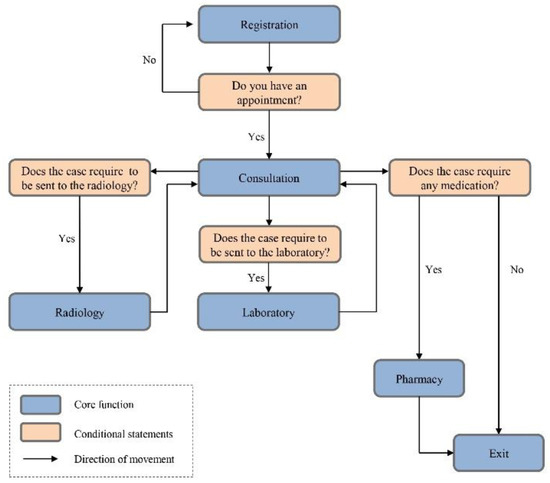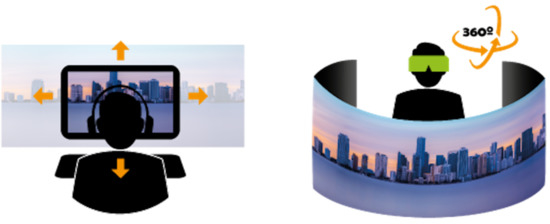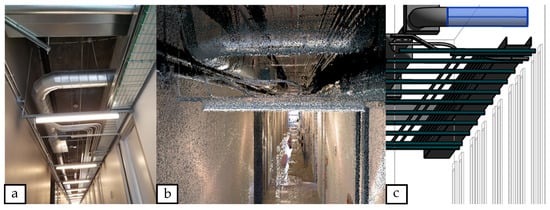Virtual Reality and Mixed Reality in Architecture, Engineering, Construction, and Operation and Maintenance (AECOM) Building Sector
Share This Topical Collection
Editor
 Dr. Svetlana J. Olbina
Dr. Svetlana J. Olbina
 Dr. Svetlana J. Olbina
Dr. Svetlana J. Olbina
E-Mail
Website
Collection Editor
Department of Construction Management, College of Health and Human Science, Colorado State University, Fort Collins, CO 80523, USA
Interests: building information modeling (BIM); virtual and mixed reality; sustainable built environment; construction safety
Special Issues, Collections and Topics in MDPI journals
Topical Collection Information
Dear Colleagues,
Application of virtual reality (VR) and mixed reality (MR) in architecture, engineering, construction, and operation and maintenance (AECOM) industry has been expanding in the last decade. VR and MR technologies and processes are used during building design, marketing of projects, communication with various stakeholders involved in a project, preconstruction, and construction phases of a project as well as operation and maintenance of building facilities. The use of VR and MR in buildings provides numerous benefits but also poses some challenges.
The aim of this Topical Collection is to identify existing and possible future applications of VR and MR by different stakeholders in different project phases, outline the benefits of VR and MR use, and provide strategies for wider adoption of VR and MR in the building sector. We invite submissions of cutting-edge articles for the Topical Collection “Virtual Reality and Mixed Reality in Architecture, Engineering, Construction, and Operation and Maintenance (AECOM) Building Sector”. Possible topics include but are not limited to the following:
- Strategies for VR and MR adoption at the company level
- Strategies for VR and MR implementation at the project level
- Addressing challenges to VR and MR adoption and implementation in building sector
- VR and MR application for the following:
- Marketing of projects
- Collaboration and communication among stakeholders
- Architectural design
- Engineering design
- Environmental analysis of buildings
- Structural analysis (e.g., geotechnical analysis, building structural analysis)
- Existing buildings (e.g., remodeling, reconstruction, retrofit)
- Construction worker training
- Safety training
- Evacuation in emergency situations
- Preconstruction and construction phases of a project (e.g., site logistics, scheduling and execution of construction tasks, assembling building systems, construction operations)
- Prefabrication
- Maintenance of buildings
- Operation of buildings
- Decommissioning and deconstruction of buildings
Dr. Svetlana J. Olbina
Collection Editor
Manuscript Submission Information
Manuscripts should be submitted online at www.mdpi.com by registering and logging in to this website. Once you are registered, click here to go to the submission form. Manuscripts can be submitted until the deadline. All submissions that pass pre-check are peer-reviewed. Accepted papers will be published continuously in the journal (as soon as accepted) and will be listed together on the collection website. Research articles, review articles as well as short communications are invited. For planned papers, a title and short abstract (about 100 words) can be sent to the Editorial Office for announcement on this website.
Submitted manuscripts should not have been published previously, nor be under consideration for publication elsewhere (except conference proceedings papers). All manuscripts are thoroughly refereed through a single-blind peer-review process. A guide for authors and other relevant information for submission of manuscripts is available on the Instructions for Authors page. Buildings is an international peer-reviewed open access monthly journal published by MDPI.
Please visit the Instructions for Authors page before submitting a manuscript.
The Article Processing Charge (APC) for publication in this open access journal is 2600 CHF (Swiss Francs).
Submitted papers should be well formatted and use good English. Authors may use MDPI's
English editing service prior to publication or during author revisions.
Keywords
- virtual reality
- mixed reality
- architectural design
- engineering design
- construction
- operation and maintenance
- collaboration
- communication
- training
- marketing
Published Papers (21 papers)
Open AccessArticle
Integrating Extended Reality in Architectural Design Studio Teaching and Reviews: Implementing a Participatory Action Research Framework
by
Kristof Crolla, Jingwen Song, Andreea Bunica and Abdullah Tahir Sheikh
Viewed by 1902
Abstract
In architectural education, the integration of Extended Reality (XR) technologies—including Virtual Reality (VR), Augmented Reality (AR), and Mixed Reality (MR)—promises to revolutionise design studio teaching by offering immersive and interactive learning experiences. However, the broad adoption of XR in architectural education faces significant
[...] Read more.
In architectural education, the integration of Extended Reality (XR) technologies—including Virtual Reality (VR), Augmented Reality (AR), and Mixed Reality (MR)—promises to revolutionise design studio teaching by offering immersive and interactive learning experiences. However, the broad adoption of XR in architectural education faces significant obstacles. These problems include a skills gap between students and educators, the challenge of establishing suitable simulation and experimental environments for specific educational needs, and the complexities of integrating these technologies into traditional curricula. This research aims to advance the pedagogical understanding of the value XR tools and techniques offer within an architectural design education context that engages students, teachers, and faculty members in a collective exploration of XR technologies. The study specifically focuses on integrating XR into the design studio’s final review stage to enhance reviewer engagement and ensuing student learning outcomes, thereby transforming architectural design studio education. Utilising a Participatory Action Research (PAR) methodology, the study established an XR learning environment and created a collaborative review framework within a Master of Architecture programme. A mixed-methods strategy was employed for data collection to assess the impact of XR applications on design processes, review experiences, and learning outcomes. This strategy included creating digital prototypes of XR applications, followed by user testing to gather both qualitative feedback and quantitative performance data. In the practical implementation section, this article provides information on the applications that were developed for specific educational needs to create simulated and experimental environments. The focus is not only on the design of these applications but also on their ability to allow students to communicate with reviewers and audiences about their design projects. The findings indicate that XR technologies have the potential to enhance students’ engagement by improving visualisation capabilities and bridging the gap between theoretical and practical aspects of architectural design. This study underscores the potential of XR technologies to transform architectural education, suggesting a framework for their integration into design studios. It contributes to the pedagogical discourse by providing insights into effective XR-based teaching methodologies and setting a foundation for future innovations and technology integration into architectural learning.
Full article
►▼
Show Figures
Open AccessArticle
Assessment of the Historical Gardens and Buildings Lighting Interaction through Virtual Reality: The Case of Casita de Arriba de El Escorial
by
Martina Gargiulo, Davide Carleo, Giovanni Ciampi, Massimiliano Masullo, Pilar Chìas Navarro, Andrea Maliqari and Michelangelo Scorpio
Cited by 3 | Viewed by 1326
Abstract
Green areas and parks are places where people’s quality of life improves, places of recreation and relaxation, in which to carry out various social activities. Among these, the historic gardens represent the union between green areas and historic architecture. Light is considered one
[...] Read more.
Green areas and parks are places where people’s quality of life improves, places of recreation and relaxation, in which to carry out various social activities. Among these, the historic gardens represent the union between green areas and historic architecture. Light is considered one of the main factors influencing the perception of such spaces at night; therefore, lighting solutions should be properly balanced. Immersive virtual reality is a tool that allows for lighting design management from different viewpoints. This study investigates how the lighting of a monumental garden affects people’s perception of its architecture at night. With this aim, a detailed 3D model of the western part of Escorial’s monumental complex in Spain was built in DIALux evo 11 and Unreal Engine 4.27 and used to propose six different lighting scenarios. Participants viewed the scenarios through a head-mounted display and provided subjective feedback on the perceived light strength of the environment and architecture. Results highlight that illuminating surrounding areas affects the environment and building perception, as well as the order in which elements capture observer attention. In particular, lit elements between the observer and the façade can reduce façade importance.
Full article
►▼
Show Figures
Open AccessReview
The Application of Extended Reality Technology in Architectural Design Education: A Review
by
Jingwen Wang, Qingsong Ma and Xindong Wei
Cited by 4 | Viewed by 3801
Abstract
With the emergence of Architecture 4.0 and the occurrence of the COVID-19 pandemic, extended reality (XR) technology has been increasingly applied in architectural education. This study aims to systematically organize and analyze the applications and outcomes of XR technology in construction education over
[...] Read more.
With the emergence of Architecture 4.0 and the occurrence of the COVID-19 pandemic, extended reality (XR) technology has been increasingly applied in architectural education. This study aims to systematically organize and analyze the applications and outcomes of XR technology in construction education over the past five years, provide a theoretical framework for its future widespread use, and highlight its drawbacks as well as future research directions. The paper employs content analysis to summarize and analyze the findings. The report reveals that more institutions are integrating XR technology into their architectural education programs and that it has a significant impact on teacher effectiveness, student motivation, reflection and improvement, and teacher–student communication. The study suggests that XR technology will increasingly replace conventional teaching techniques in classrooms.
Full article
►▼
Show Figures
Open AccessArticle
Examination of User Emotions and Task Performance in Indoor Space Design Using Mixed-Reality
by
Kyung-Tae Lee, Chang-Han Park and Ju-Hyung Kim
Cited by 4 | Viewed by 1688
Abstract
Given the COVID-19 pandemic and the resulting social distancing measures with inevitable telecommuting, capturing user emotions is essential as it affects both satisfaction and task performance. Therefore, the purpose of this study was to analyze emotions and task performance in terms of dislike
[...] Read more.
Given the COVID-19 pandemic and the resulting social distancing measures with inevitable telecommuting, capturing user emotions is essential as it affects both satisfaction and task performance. Therefore, the purpose of this study was to analyze emotions and task performance in terms of dislike and personalized decision-making in indoor spaces. To facilitate experiments with participants, a mixed-reality environment was utilized with the Pleasure, Arousal, Dominance (PAD) test and cognitive tests. The results of the experiment conducted on 30 subjects identified that aroused and discontented emotions dominated in non-preferred spaces, but pleased, important, and autonomous emotions arose in personalized spaces, as determined through sentimental analysis and statistical methods. Although negative emotions were present in the aversion space, attention and execution abilities were high compared to the personalized space, but working memory was low. By conducting stepwise regression analysis, it was found that working in a visually unfavorable space, which caused an increase in controlled or controlling emotions, improved short-term work efficiency. In addition, important emotions did not have a positive effect on any task performance. However, with pleased and contented emotions in a personalized indoor space, long-term work efficiency was increased, as explained by the Yerkes-Dodson law.
Full article
►▼
Show Figures
Open AccessArticle
Virtual Representations of Cultural Heritage: Sharable and Implementable Case Study to Be Enjoyed and Maintained by the Community
by
Cecilia Maria Bolognesi and Fausta Fiorillo
Cited by 7 | Viewed by 2202
Abstract
This paper is related to the field of digital-informed modelling of heritage assets (HBIM). The scientific literature has been addressing this topic for years with many different facets: focusing digitalization on the analysis and modelling of heritage asset geometries, construction, development over time,
[...] Read more.
This paper is related to the field of digital-informed modelling of heritage assets (HBIM). The scientific literature has been addressing this topic for years with many different facets: focusing digitalization on the analysis and modelling of heritage asset geometries, construction, development over time, or the representation of materials and degradations. This research aims not only to optimize the common digital workflows but also to demonstrate the effectiveness of digitalization and virtual reality applications in preserving the memory of places. Furthermore, a strategy for the maintenance of cultural heritage through virtual reality in a participatory process is proposed. The applied method develops appropriate new workflows and tools to enable enjoyment of monuments of the developed case study remotely; moreover, it allows the creation of content from ordinary users that can be incorporated into the digital models over time. Therefore, virtual and augmented reality environments are proving to be effective methods even for non-experts to understand space, allowing for active citizenship involvement.
Full article
►▼
Show Figures
Open AccessArticle
Spatial Perception Imperatives in Virtual Environments: Understanding the Impacts of View Usage Patterns on Spatial Design Decisions in Virtual Reality Systems
by
Sahand Azarby and Arthur Rice
Cited by 2 | Viewed by 3376
Abstract
Spatial perception in virtual reality systems relies on a number of variables, including how users explore, observe and perceive the spatial factors of a virtual environment. In virtual reality systems, users can assume different types of views for spatial decision-making about the sizes
[...] Read more.
Spatial perception in virtual reality systems relies on a number of variables, including how users explore, observe and perceive the spatial factors of a virtual environment. In virtual reality systems, users can assume different types of views for spatial decision-making about the sizes and scales of and relationships among virtual spaces. This research explored the role of view usage patterns in spatial cognition and decision-making in a fully immersive virtual reality system and monitor-based virtual reality system. The focus of study was the impact of using the eye-level view as the only view type in a fully immersive virtual reality system on actual and perceived view usage patterns in a monitor-based virtual reality system. In addition, users’ spatial decision-making results were compared with regards to system usage sequence and view type. Quantitative and qualitative data, descriptive and inferential statistical comparisons, and testing of both systems were used to determine the participants’ performances concerning view usage patterns and the design outcomes. The results showed a moderate association between the view type utilized for spatial perception in a monitor-based virtual reality system and variations in system usage sequence. In addition, for both systems, variations in system usage sequence, space type, and other characteristics all affected the strength of the linear regressions of the sizes and scales of the design outcomes.
Full article
►▼
Show Figures
Open AccessReview
Framework for the Use of Extended Reality Modalities in AEC Education
by
Barbara Oliveira Spitzer, Jae Hoon Ma, Ece Erdogmus, Ben Kreimer, Erica Ryherd and Heidi Diefes-Dux
Cited by 14 | Viewed by 3157
Abstract
The educational applications of extended reality (XR) modalities, including virtual reality (VR), augmented reality (AR), and mixed reality (MR), have increased significantly over the last ten years. Many educators within the Architecture, Engineering, and Construction (AEC) related degree programs see student benefits that
[...] Read more.
The educational applications of extended reality (XR) modalities, including virtual reality (VR), augmented reality (AR), and mixed reality (MR), have increased significantly over the last ten years. Many educators within the Architecture, Engineering, and Construction (AEC) related degree programs see student benefits that could be derived from bringing these modalities into classrooms, which include but are not limited to: a better understanding of each of the subdisciplines and the coordination necessary between them, visualizing oneself as a professional in AEC, and visualization of difficult concepts to increase engagement, self-efficacy, and learning. These benefits, in turn, help recruitment and retention efforts for these degree programs. However, given the number of technologies available and the fact that they quickly become outdated, there is confusion about the definitions of the different XR modalities and their unique capabilities. This lack of knowledge, combined with limited faculty time and lack of financial resources, can make it overwhelming for educators to choose the right XR modality to accomplish particular educational objectives. There is a lack of guidance in the literature for AEC educators to consider various factors that affect the success of an XR intervention. Grounded in a comprehensive literature review and the educational framework of the Model of Domain Learning, this paper proposes a decision-making framework to help AEC educators select the appropriate technologies, platforms, and devices to use for various educational outcomes (e.g., learning, interest generation, engagement) considering factors such as budget, scalability, space/equipment needs, and the potential benefits and limitations of each XR modality. To this end, a comprehensive review of the literature was performed to decipher various definitions of XR modalities and how they have been previously utilized in AEC Education. The framework was then successfully validated at a summer camp in the School of Building Construction at Georgia Institute of Technology, highlighting the importance of using appropriate XR technologies depending on the educational context.
Full article
►▼
Show Figures
Open AccessArticle
Real-Time and Remote Construction Progress Monitoring with a Quadruped Robot Using Augmented Reality
by
Srijeet Halder, Kereshmeh Afsari, John Serdakowski, Stephen DeVito, Mahnaz Ensafi and Walid Thabet
Cited by 20 | Viewed by 5431
Abstract
Construction progress monitoring involves a set of inspection tasks with repetitive in-person observations on the site. The current manual inspection process in construction is time-consuming, inefficient and inconsistent mainly due to human limitations in the ability to persistently and accurately walkthrough the job
[...] Read more.
Construction progress monitoring involves a set of inspection tasks with repetitive in-person observations on the site. The current manual inspection process in construction is time-consuming, inefficient and inconsistent mainly due to human limitations in the ability to persistently and accurately walkthrough the job site and observe the as-built status of which robots are considerably better. Enabling the process of visual inspection with a real-time and remote inspection capability using robots can provide more frequent and accessible construction progress data for inspectors to improve the quality of inspection and monitoring. Also, integrating remote inspection with an Augmented Reality (AR) platform can help the inspector to verify as-planned BIM data with the as-built status. This paper proposes a new approach to perform remote monitoring of the construction progress in real-time using a quadruped robot and an AR solution. The proposed computational framework in this study uses a cloud-based solution to integrate the quadruped robot’s control for remote navigation through the construction site with 360° live-stream video of the construction status, as well as a real-time AR solution to visualize and compare the as-built status with as-planned BIM geometry. The implementation of the proposed framework is discussed, and the developed framework is evaluated in two use cases through experimental investigations.
Full article
►▼
Show Figures
Open AccessArticle
Fuzzy Comprehensive Evaluation of Mixed Reality Seismic Retrofitting Training System
by
Zhansheng Liu and Jie Xue
Cited by 2 | Viewed by 1674
Abstract
Due to the complexity of the construction environment and retrofitting methods, it is difficult to achieve the expected retrofitting effect. Therefore, effective seismic retrofitting training is a necessary way to ensure retrofitting workers acquire enough professional knowledge, skills and safe behaviors, which are
[...] Read more.
Due to the complexity of the construction environment and retrofitting methods, it is difficult to achieve the expected retrofitting effect. Therefore, effective seismic retrofitting training is a necessary way to ensure retrofitting workers acquire enough professional knowledge, skills and safe behaviors, which are critical to retrofitting. Mixed reality has huge potential in construction training. This paper conducts a fuzzy comprehensive evaluation of the MR seismic retrofitting training system to research the potential of MR in training. The purpose of this research was to provide scientific guidance and reference for the development, improvement and selection of MR training systems in the future. In this research, the evaluation indicators of the MR training system were firstly analyzed. Next, the weight of each evaluation indicator was calculated by the judgment matrix. Then, the evaluation model was established based on the qualitative–quantitative transformation principle of indicators. Finally, the results of the MR seismic retrofitting training system are obtained by combining the evaluation model with the membership matrix. The evaluation result of the training system in this paper is excellent.
Full article
►▼
Show Figures
Open AccessArticle
Immersive VR versus BIM for AEC Team Collaboration in Remote 3D Coordination Processes
by
Bita Astaneh Asl and Carrie Sturts Dossick
Cited by 9 | Viewed by 3207
Abstract
Building Information Modeling (BIM) and Virtual Reality (VR) are both tools for collaboration and communication, yet questions still exist as to how and in what ways these tools support technical communication and team decision-making. This paper presents the results of an experimental research
[...] Read more.
Building Information Modeling (BIM) and Virtual Reality (VR) are both tools for collaboration and communication, yet questions still exist as to how and in what ways these tools support technical communication and team decision-making. This paper presents the results of an experimental research study that examined multidisciplinary Architecture, Engineering, and Construction (AEC) team collaboration efficiency in remote asynchronous and synchronous communication methods for 3D coordination processes by comparing BIM and immersive VR both with markup tools. Team collaboration efficiency was measured by Shared Understanding, a psychological method based on Mental Models. The findings revealed that the immersive experience in VR and its markup tool capabilities, which enabled users to draw in a 360-degree environment, supported team communication more than the BIM markup tool features, which allowed only one user to draw on a shared 2D screenshot of the model. However, efficient team collaboration in VR required the members to properly guide each other in the 360-degree environment; otherwise, some members were not able to follow the conversations.
Full article
►▼
Show Figures
Open AccessArticle
Scale Estimation for Design Decisions in Virtual Environments: Understanding the Impact of User Characteristics on Spatial Perception in Immersive Virtual Reality Systems
by
Sahand Azarby and Arthur Rice
Cited by 6 | Viewed by 3423
Abstract
User spatial perception in different virtual environments may vary based on specific user characteristics and the features of the Virtual Reality (VR) system. This research explored the impacts of user characteristics such as age, gender, and design knowledge on spatial decision-making by comparing
[...] Read more.
User spatial perception in different virtual environments may vary based on specific user characteristics and the features of the Virtual Reality (VR) system. This research explored the impacts of user characteristics such as age, gender, and design knowledge on spatial decision-making by comparing an Immersive Virtual Reality Interactive Environment (IVRIE) with a traditional Virtual Reality system (also known as desktop-based Virtual Reality system, abbreviated herein as the DT system). Users’ spatial perceptions when using IVRIE and a DT system were studied with regard to the features of the different systems, including the types of immersion and interaction, users’ perceptions of human body scale, and how the environments were explored. The factors affecting the two systems included texture variation, type of enclosure, and spatial function. Inferential testing using quantitative data was applied to identify differences between the two systems in terms of participants’ actual design outcomes. The results showed that based on the type, spatial characteristics, and texture of spaces, perception filters could have both active and inactive roles in impacting the spatial decision-making of participants between the two systems. In addition, between the two systems, participant characteristics had more impact on size variations for both types of spaces—fully enclosed and corridors—for accommodating larger groups.
Full article
►▼
Show Figures
Open AccessArticle
Linking BIM to Power BI and HoloLens 2 to Support Facility Management: A Case Study Approach
by
Ashit Harode, Mahnaz Ensafi and Walid Thabet
Cited by 8 | Viewed by 5096
Abstract
Facility lifecycle data captured in BIM during design and construction are very valuable for effective facility operations and maintenance. Traditionally, model authoring and analysis tools have been used to search and query model information. These tools are not well designed to search and
[...] Read more.
Facility lifecycle data captured in BIM during design and construction are very valuable for effective facility operations and maintenance. Traditionally, model authoring and analysis tools have been used to search and query model information. These tools are not well designed to search and display needed data and they require a steep learning curve. In this paper, the authors propose the use of Power BI dashboards to facilitate easy access and display of lifecycle data embedded in the model. The implementation and use of dashboards for facility management are discussed using a case study. The effectiveness and usability of the dashboards are validated using a focus group of six industry experts that were first interviewed then asked to complete a questionnaire. Feedback from interviews indicated that customized dashboards are effective tools to view, analyze and draw insights on data from various sources and can improve facility operations and management. Numerical results from the PSSUQ using fourteen questions indicated positive responses overall with an average score of four or five from the majority of respondents. Finally, the authors tested integration of the Power BI dashboards with the HoloLens 2 to deliver relevant up-to-date facility lifecycle data in near real-time to field staff.
Full article
►▼
Show Figures
Open AccessArticle
Enhancing Wayfinding Performance in Existing Healthcare Facilities Using Virtual Reality Environments to Revise the Distribution of Way-Showing Devices
by
Ammar Al-Sharaa, Mastura Adam, Amer Siddiq Amer Nordin, Ameer Alhasan, Riyadh Mundher and Omar Zaid
Cited by 12 | Viewed by 2883
Abstract
Wayfinding is the process of navigating the environment by using the available environmental cues. The issue of wayfinding difficulty in large healthcare facilities has grabbed the attention of many researchers in terms of its potential taxing effects on both users and institutions alike.
[...] Read more.
Wayfinding is the process of navigating the environment by using the available environmental cues. The issue of wayfinding difficulty in large healthcare facilities has grabbed the attention of many researchers in terms of its potential taxing effects on both users and institutions alike. While the challenge of regulating the process of designing wayfinding systems is still an active field of investigation, there has been a paucity of research addressing the challenge of distributing way-showing items based on users’ performance within healthcare environments. This study proposes a wayfinding enhancement scheme whereby users’ wayfinding performance data forms the basis of the process of distributing way-showing items within an outpatient unit in Malaysia. Furthermore, two virtual reality experiments were carried out, the first representing the existing wayfinding system and the second representing the new distribution. A cross-comparison between the two sets of results was conducted to evaluate the effect resulting from altering the as-built wayfinding system. The results indicated an overall reduction of time consumed to reach the same destinations as well as lesser distances traveled within the environment resulting from the implementation of the new distribution. This study puts forward the concept of implementing virtual reality environments to address wayfinding systems’ design challenges in healthcare facilities rather than relying on designers’ intuition.
Full article
►▼
Show Figures
Open AccessArticle
Introducing Immersive Virtual Reality in the Initial Phases of the Design Process—Case Study: Freshmen Designing Ephemeral Architecture
by
Hugo C. Gomez-Tone, Marizela Alpaca Chávez, Luana Vásquez Samalvides and Jorge Martin-Gutierrez
Cited by 20 | Viewed by 3857
Abstract
Immersive Virtual Reality (IVR) has proven to be an important tool for the exploration and communication of architectural projects prior to their real construction; however, there have been few scientific advances of its use in the understanding, exploration, and definition of architectural space
[...] Read more.
Immersive Virtual Reality (IVR) has proven to be an important tool for the exploration and communication of architectural projects prior to their real construction; however, there have been few scientific advances of its use in the understanding, exploration, and definition of architectural space by architecture students in their initial design processes. The purpose of this research is to determine how the use of IVR incorporated in the initial phases of the architectural design process improves, among students, the achievement of three specifics design competencies, and to know the evaluation that professors make of the advantages and disadvantages of the use of this tool in the design process. A mixed methodology was applied, considering participatory observations and surveys of students and teachers concerning the initial architecture workshop on architectural careers. It was found that the three analyzed competencies are better achieved with the use of IVR due to its high utility in the perception of space on a real scale and in its interior experimentation, both referred to as important advantages by students and teachers. It is concluded that the application of the interactive and immersive VR is a pedagogical tool that allows students to get feedback from their own spatial experience to correct and improve their designs, while teachers find the tool useful in the initial phases of architectural design.
Full article
►▼
Show Figures
Open AccessArticle
Immersive Technology Implementation in the Construction Industry: Modeling Paths of Risk
by
Adedeji Olushola Afolabi, Chukwuma Nnaji and Chioma Okoro
Cited by 11 | Viewed by 5219
Abstract
The purposes of this paper are to identify risk factors impacting the successful implementation of immersive reality technology (ImT) in the construction industry, analyze these risk factors (impact and probability), assess the relationships among different categories of risk factors, and provide recommendations to
[...] Read more.
The purposes of this paper are to identify risk factors impacting the successful implementation of immersive reality technology (ImT) in the construction industry, analyze these risk factors (impact and probability), assess the relationships among different categories of risk factors, and provide recommendations to improve ImT implementation. A literature review, a pilot test based on expert interviews, and a questionnaire survey were used. First, the risk factors of ImT applications were identified by consulting the relevant literature on virtual reality, mixed reality, and augmented reality; these were subsequently grouped into five categories—technology, operation, individual/worker, investment, and external. Next, a questionnaire survey was designed and distributed to relevant construction practitioners in South Africa (usable response = 175). Twenty-one ImT implementation risk factors were identified, and risk criticality scores ranged from 2.02 to 3.18. High investment cost, the need for extensive worker training, and the possible introduction of new risks for workers were rated as significant risks. The present study confirmed three statistically significant hypothesized risk paths—namely, those between external issues and individual/worker’s concerns, between external issues and investment limitations, and between individual/worker’s concerns and technology concerns. The present study contributes to the literature regarding the adoption of construction technology by providing a list of critical risk factors that could be used to develop models and tools for assessing ImT adoption and guide practitioners involved in integrating ImTs.
Full article
►▼
Show Figures
Open AccessPerspective
Visualizing a New Sustainable World: Toward the Next Generation of Virtual Reality in the Built Environment
by
Dragana Nikolić and Jennifer Whyte
Cited by 18 | Viewed by 4547
Abstract
What is the future of virtual reality (VR) in the built environment? As work becomes increasingly distributed across remote and hybrid forms of organizing as a result of the COVID-19 pandemic, there is a need to rethink how we use the set of
[...] Read more.
What is the future of virtual reality (VR) in the built environment? As work becomes increasingly distributed across remote and hybrid forms of organizing as a result of the COVID-19 pandemic, there is a need to rethink how we use the set of collaborative technologies to move toward a sustainable world. We propose a new vision of VR as a discipline-agnostic platform for an interdisciplinary integration of the allied design, social, and environmental disciplines to address emerging challenges across the building sectors. We build this contribution through the following steps. First, we contextualize VR technologies within the changing digital landscape and underlying tensions in the built environment practices. Second, we characterize the difficulties that have arisen in using them to address challenges, illustrating our argument with leading examples. Third, we conceptualize VR configurations and explore underlying assumptions for their use across disciplinary scenarios. Fourth, we propose a vision of VR as a discipline-agnostic platform that can support built environment users in visualizing preferred futures. We conclude by providing directions for research and practice.
Full article
►▼
Show Figures
Open AccessArticle
Navigation Tasks in Desktop VR Environments to Improve the Spatial Orientation Skill of Building Engineers
by
Carlos Carbonell-Carrera, Jose Luis Saorin and Allison J. Jaeger
Cited by 4 | Viewed by 3133
Abstract
Virtual reality is a powerful tool for teaching 3D digital technologies in building engineering, as it facilitates the spatial perception of three-dimensional space. Spatial orientation skill is necessary for understanding 3D space. With VR, users navigate through virtually designed buildings and must be
[...] Read more.
Virtual reality is a powerful tool for teaching 3D digital technologies in building engineering, as it facilitates the spatial perception of three-dimensional space. Spatial orientation skill is necessary for understanding 3D space. With VR, users navigate through virtually designed buildings and must be constantly aware of their position relative to other elements of the environment (orientation during navigation). In the present study, 25 building engineering students performed navigation tasks in a desktop-VR environment workshop. Performance of students using the desktop-VR was compared to a previous workshop in which navigation tasks were carried out using head-mounted displays. The Perspective Taking/Spatial Orientation Test measured spatial orientation skill. A questionnaire on user experience in the virtual environment was also administered. The gain in spatial orientation skill was 12.62%, similar to that obtained with head-mounted displays (14.23%). The desktop VR environment is an alternative to the HMD-VR environment for planning strategies to improve spatial orientation. Results from the user-experience questionnaire showed that the desktop VR environment strategy was well perceived by students in terms of interaction, 3D visualization, navigation, and sense of presence. Unlike in the HDM VR environment, student in the desktop VR environment did not report feelings of fatigue or dizziness.
Full article
►▼
Show Figures
Open AccessArticle
Evaluating 4D-BIM and VR for Effective Safety Communication and Training: A Case Study of Multilingual Construction Job-Site Crew
by
Muneeb Afzal and Muhammad Tariq Shafiq
Cited by 49 | Viewed by 9704
Abstract
Effective safety management is a key aspect of managing construction projects. Current safety management practices are heavily document-oriented that rely on historical data to identify potential hazards at a construction job site. Such document-bound safety practices are prone to interpretative and communication errors
[...] Read more.
Effective safety management is a key aspect of managing construction projects. Current safety management practices are heavily document-oriented that rely on historical data to identify potential hazards at a construction job site. Such document-bound safety practices are prone to interpretative and communication errors in multilingual construction environments, such as in the United Arab Emirates (UAE). Applications of Building Information Models (BIM) and Virtual Reality (VR) are claimed to improve hazards identification and communication in comparison to 2-D static drawings by simulating job-site conditions and safety implications and thus can interactively educate the job-site crew to enhance their understanding of the on-site conditions and safety requirements. This paper presents findings of a case study conducted to evaluate the effectiveness of 4-Dimensional (4-D) BIM and VR in simulating job-site safety instructions for a multilingual construction crew at a project in the UAE. 4-D BIM-enabled VR simulations, in lieu of the Abu Dhabi Occupational Safety and Health Center (OSHAD) code of practice, were developed and tested through risk assessment and safety training exercises for the job-site crew. The results showed a significant improvement in the job-site crew’s ability to recognize a hazard, understand safety protocols, and incorporate proactive risk response in mitigating the hazards. This study concludes that 4-D BIM-enabled VR visualization can improve information flow and knowledge exchange in a multilingual environment where jobsite crew do not speak a common language and cannot understand written safety instructions, manuals, and documents in any common language due to linguistic diversity. The findings of this study are useful in communicating safety instructions, and safety training, in the UAE, as well as in international projects.
Full article
►▼
Show Figures
Open AccessReview
Application of Virtual Environments for Biophilic Design: A Critical Review
by
Maryam Mollazadeh and Yimin Zhu
Cited by 38 | Viewed by 11904
Abstract
Biophilic design as a new design approach promotes the integration of natural elements into the built environment, leading to a significant impact on human health, well-being, and productivity. On the other hand, scholars have explored Virtual Environment (VE) to create virtual nature and
[...] Read more.
Biophilic design as a new design approach promotes the integration of natural elements into the built environment, leading to a significant impact on human health, well-being, and productivity. On the other hand, scholars have explored Virtual Environment (VE) to create virtual nature and provide a complex experience of exposure to natural elements virtually. However, there is a lack of understanding about such studies in general, which use VE as a reliable tool to support biophilic design. Thus, the authors conducted a literature review on the applications, capabilities, and limitations of VE for biophilic design. The literature review shows that VE is capable of supporting critical features of biophilic design studies such as representing combinations of biophilic patterns, providing multimodal sensory inputs, simulating stress induction tasks, supporting required exposure time to observe biophilic patterns, and measuring human’s biological responses to natural environment. However, factors affecting user’s experience of a virtual biophilic environment exist, such as VE experience dimensions, user-related factors, cybersickness, navigational issues, and possible limitations of VE sensory input. Overall, biophilic design studies in VEs are still limited. Nevertheless, there are many opportunities for further research in this field.
Full article
►▼
Show Figures
Open AccessArticle
Augmented Reality to Enable Users to Identify Deviations for Model Reconciliation
by
Jad Chalhoub, Steven K. Ayer and Kieren H. McCord
Cited by 24 | Viewed by 4105
Abstract
Effective use of Building Information Modeling (BIM) during operation typically requires modeled content to accurately match the built spaces, which necessitates effective field verification techniques to ensure that BIM content matches the actual built conditions. Some contractors leverage laser scanning and other reality-capture
[...] Read more.
Effective use of Building Information Modeling (BIM) during operation typically requires modeled content to accurately match the built spaces, which necessitates effective field verification techniques to ensure that BIM content matches the actual built conditions. Some contractors leverage laser scanning and other reality-capture technologies to verify modeled content prior to turnover, but these approaches can be time- and resource-intensive. Augmented reality (AR) enables users to view BIM content overlaid on their field of view of the built space. Research suggests potential for using AR for tasks related to field verification, but a study that systematically explores the specific types of deviations that can be detected with this technology is missing from the current literature. This paper tasks participants with using immersive AR to identify deviations from BIM in a ceiling plenum space that includes installed Mechanical, Electrical and Plumbing (MEP) components, which would typically be included in a coordinated BIM. The results suggest that AR can enable users to effectively identify large deviations and missing building elements. However, the results do not indicate that AR effectively enables users to identify small deviations and can potentially lead to identifying false positive observations, where accurately constructed elements are perceived as deviating from BIM. These results suggest that immersive AR can effectively be used to check whether recently built elements conform to the intended BIM in instances where speed of verification is more important than adhering to strict tolerances. For instances where accuracy (less than two inches) is critical, the results of this work suggest that AR can be used to help determine where in the building more accurate, but more resource-intensive, reality-capture technologies should be used.
Full article
►▼
Show Figures
Open AccessArticle
CFD Visualization in a Virtual Reality Environment Using Building Information Modeling Tools
by
Jiayi Yan, Karen Kensek, Kyle Konis and Douglas Noble
Cited by 23 | Viewed by 7022
Abstract
Scientific visualization has been an essential process in the engineering field, enabling the tracking of large-scale simulation data and providing intuitive and comprehendible graphs and models that display useful data. For computational fluid dynamics (CFD) data, the need for scientific visualization is even
[...] Read more.
Scientific visualization has been an essential process in the engineering field, enabling the tracking of large-scale simulation data and providing intuitive and comprehendible graphs and models that display useful data. For computational fluid dynamics (CFD) data, the need for scientific visualization is even more important given the complicated spatial data structure and large quantities of data points characteristic of CFD data. To better take advantage of CFD results for buildings, the potential use of virtual reality (VR) techniques cannot be overlooked in the development of building projects. However, the workflow required to bring CFD simulation results to VR has not been streamlined. Building information modeling (BIM) as a lifecycle tool for buildings includes as much information as possible for further applications. To this end, this study brings CFD visualization to VR using BIM tools and reports the evaluation and analysis of the results.
Full article
►▼
Show Figures






